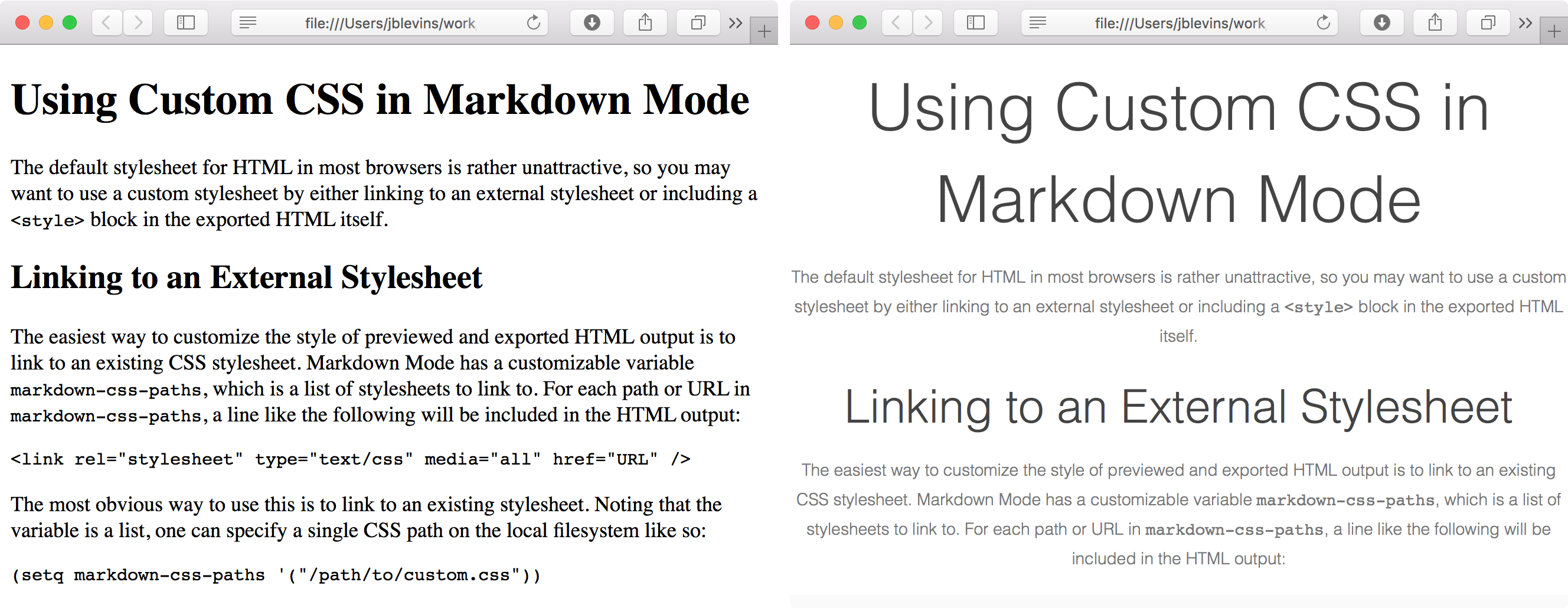Using Custom CSS in Markdown Mode
August 11, 2017
The default stylesheet for HTML in most browsers is rather
unattractive, so you may want to use a custom stylesheet by either
linking to an external stylesheet or including a <style> block in
the exported HTML itself.

Linking to an External Stylesheet
The easiest way to customize the style of previewed and exported HTML
output is to link to an existing CSS stylesheet. Markdown Mode has a
customizable variable markdown-css-paths, which is a list of
stylesheets to link to. For each path or URL in markdown-css-paths,
a line like the following will be included in the HTML output:
<link rel="stylesheet" type="text/css" media="all" href="URL" />
The most obvious way to use this is to link to an existing stylesheet. Noting that the variable is a list, one can specify a single CSS path on the local filesystem like so:
(setq markdown-css-paths '("/path/to/custom.css"))
On the other hand, to use an existing URL use the following form:
(setq markdown-css-paths '("http://mydomain.com/style.css"))
As another example, the Marked 2 previewer contains several
built-in stylesheets that users can choose between. Conveniently,
these stylesheets are stored on the filesystem as CSS files inside the
application package and you can link to them locally. To use the
“Lopash” style when previewing from markdown-mode, you can set the
markdown-css-paths list as follows:
(setq markdown-css-paths
'("/Applications/Marked 2.app/Contents/Resources/Lopash.css"))
If you don’t have a stylesheet already, there are many popular Markdown stylesheets available online. For example, here are three such repositories on GitHub:
- http://markdowncss.github.io
- http://jasonm23.github.io/markdown-css-themes/
- https://sindresorhus.com/github-markdown-css/
Embedding a Custom Stylesheet
As an alternative (or in addition to) linking to an external
stylesheet, you can also include inline style information in output
files by using the markdown-xhtml-header-content variable. This
variable specifies a string to add to the <head> block of the
resulting HTML output.
For example, to remove the underline from links, but underline links
when hovering, you can add the following <style> block to
markdown-xhtml-header-content:
(setq markdown-xhtml-header-content
"<style type='text/css'>
a { text-decoration: none; }
a:hover { text-decoration: underline; }
</style>")